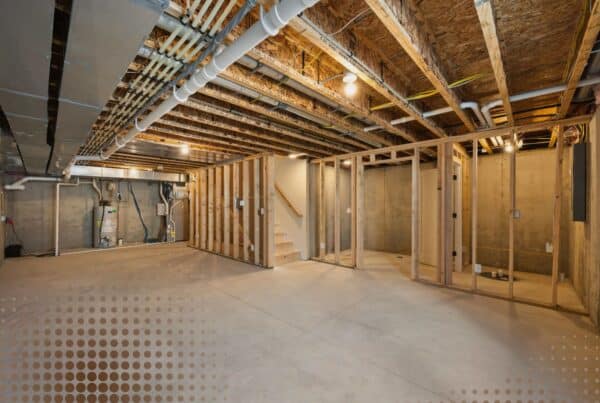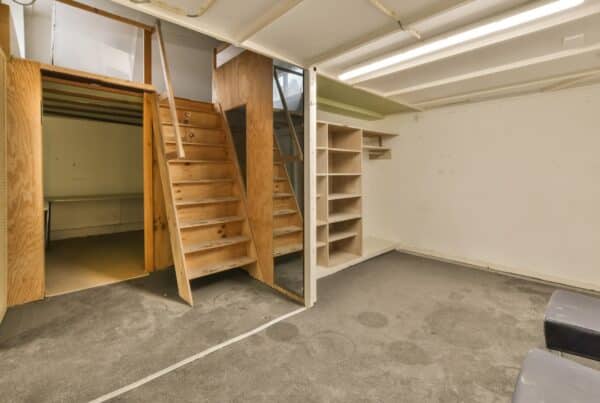If you’re noticing mold on your basement carpet, it’s a sign worth taking seriously. Mold doesn’t appear without a reason, so it often indicates problems that could be affecting your entire basement or home.
From hidden leaks to poor drainage, the source is your starting point when handling visible mold safely and doing routine prevention. So that you never find yourself with moldy carpet and no plan, this post covers common sources, what it means for your basement or foundation, and the best things to do if you spot growth.
What Causes Carpet Mold in Basements?
Carpet mold in basements doesn’t happen by accident. Moisture is usually the main culprit, but it can come from different sources.
Leaks from pipes, flooding, or even cracks in your foundation can let water seep into your basement. Poor drainage systems outside the home can also allow rainwater to collect and eventually make its way inside.
High humidity levels are another potential big factor. Basements often have less ventilation, which means moisture from the air gets trapped, creating the perfect environment for mold.

Red Flags for Bigger Issues
If you’re spotting mold on your basement carpet, it’s important to consider what it might mean:
- Visible Mold and Odors: If mold is visible or there’s a musty smell, there’s likely a moisture issue somewhere nearby. Check for leaks in walls, floors, or around the foundation.
- Recurring Mold Growth: Mold that keeps coming back after cleaning could point to structural issues like cracks in the foundation or ineffective drainage systems.
- Damp or Warped Flooring: Feeling damp spots or noticing warped flooring beneath the carpet could signal leaks or standing water underneath. These are signs that should be addressed quickly to prevent bigger problems.
- Increased Humidity Levels: High humidity is common in basements, but if levels are unusually high, it can make mold growth worse. Testing humidity levels with a simple device can help determine if your basement needs better ventilation or a dehumidifier.
Ignoring Basement Moisture is Dangerous
Moisture in basements can lead to more than just mold. It can damage the structure of your home, cause wood rot, and even impact your health.
Mold spores spread quickly, and without proper action, they can move beyond the carpet to walls, furniture, and other areas, worsening air quality. This can trigger allergies and respiratory issues, especially for children or anyone with asthma.
Addressing moisture issues early on protects not only the basement but the integrity of your entire home. Keeping basements dry and mold-free is essential for avoiding long-term damage.

Maintenance for Mold Prevention
Proactively managing moisture is key to preventing mold growth in your basement. Here’s how:
- Proper Drainage Solutions: Install sump pumps or drainage systems to redirect water away from your home’s foundation. A well-placed drainage system keeps water from seeping into the basement and causing mold.
- Dehumidification and Ventilation: Keep the basement’s humidity level under control using a dehumidifier. Make sure air circulates well by opening windows or installing fans to prevent moisture buildup.
- Regular Inspections: Schedule routine checks for leaks, cracks, and water damage signs. A professional inspection can catch hidden issues before they become serious problems.
Also, don’t forget to clean your gutters regularly to ensure water flows away from the house. You can use a waterproof sealant on walls as an extra layer of protection, especially if you notice any signs of moisture.
When to Call a Professional
- Recurring mold
- Consistent or new leaks
- Visible foundation cracks or warped basement surfaces
- High levels of humidity
Carpet mold can be caused by several other issues that might need specialized solutions beyond standard cleanup. A specialist can recommend effective, long-lasting solutions like advanced waterproofing systems or foundation repairs.
With professional help, you can ensure the problem is fixed properly, preventing future mold growth and protecting your home’s integrity. Don’t wait until small mold issues become major damage—get the right support early on to maintain a healthy, safe environment for your family.
Conclusion
Tackling mold early on basement carpet, or anywhere in your home, helps prevent severe and expensive damage. Plus, you’re avoiding the known health risks associated with mold exposure.
Keeping humidity levels in check, inspecting your basement regularly, and addressing any leaks promptly can halt problems before they start. If you’re noticing persistent mold or need to schedule an inspection of your foundation in Columbus, OH, and surrounding areas, Buckeye Basement Solutions is here to help.



